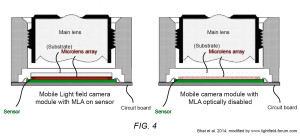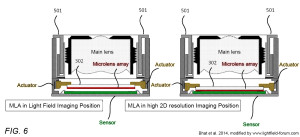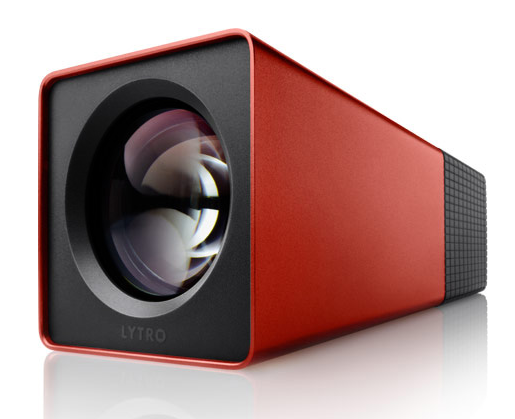Exclusive: Lytro Patents Hybrid Camera for Conventional and Light Field Photography
 The US Patent and Trademark Office has just released a patent application by Lytro titled “Light field image capture device having 2D image capture mode”. The application was filed September 8 2014 by nine (then-) Lytro employees, and describes a dual-mode light field camera that can switch between two modes, allowing either light field imaging or traditional high-resolution 2D imaging:
The US Patent and Trademark Office has just released a patent application by Lytro titled “Light field image capture device having 2D image capture mode”. The application was filed September 8 2014 by nine (then-) Lytro employees, and describes a dual-mode light field camera that can switch between two modes, allowing either light field imaging or traditional high-resolution 2D imaging:
Abstract: A dual-mode light field camera or plenoptic camera is enabled to perform both 3D light field imaging and conventional high-resolution 2D imaging, depending on the selected mode. In particular, an active system is provided that enables the microlenses to be optically or effectively turned on or turned off, allowing the camera to selectively operate as a 2D imaging camera or a 3D light field camera.
In contrast to Apple’s earlier patent for a similar hybrid camera, Authors Jerome Bhat and colleagues (including Lytro founder Ren Ng) detail several ways to selectively (de-)activate the microlens array (MLA) in a camera while keeping it in the optical path: In one embodiment, the MLA is made “optically transparent” by moving it closer to the image sensor, or optically effective by moving it sufficiently far from the sensor.
Other solutions include pumping a medium of equal refractive index as the MLA into a nearby cavity to deactivate the microlenses, electronically adjusting a medium’s refractive index via electrodes, or even using microlenses from a deformable material.
The application text also mentions mobile applications, and the automatic activation of the appropriate imaging mode based on the observed scene.









1 Response